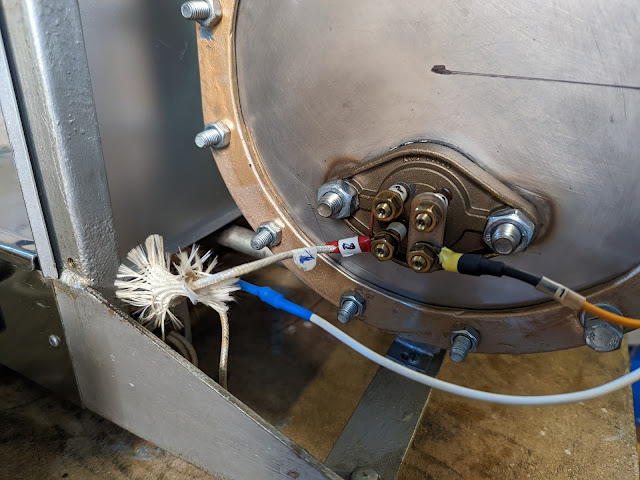Sonne´s Coffee Spot
A few words from a coffee fan.
Tuesday, January 17, 2023
In the learning - Faema Faemina
Friday, June 24, 2022
Faema Lambro restoration project 4
I love the Faema Lambro's. New Faema Lambro approx anno 1960-61 or later. Inox panels and drip tray.
On going restauration project......
Faema Lambro restoration project 3
-- Project finished - The Lambro has now mowed to a new home!
The second Lambro seen further down this blog found a happy owner and is now living as an Vintage analog standpoint in a handicraft bakery spilling it's glory to everyone who visits.......and of course makes a great cup of espresso.
I of course could not pass away the opportunity of refurbishing yet another old Faema Lambro.
This Lambro I estimate to be from around 1957-58 due to it's chromed brass panels and drip tray cover as opposed to the later stainless steel ditto. Also other small things such as streight notched screws in the Steam and Water valve assembly's and mains water valve proves that this probably must be one of the oldest Lambro's out there.
It was actually in reasonable shape when I got it in and the boiler had been recently renovated. The previous owner and presumably restorer had been somewhat creative by replacing the original boiler end plate (too damaged I assume) with a flat piece of steel. That worked all fine except that the flat boiler end plate did not allow for the heating element to install in a regularly manner but had to be turned 180 deg. in order to fit in. This would expose the heating element much earlier if running low on water. I manage to source a second hand but original boiler end plate and it is now back to original. Also a 2400W heating element replaced the standard 1500W. The side panels was really scruffed and the insides of the machine was burned and sooted from long time use of the gas burner. I cleaned it all up and chose to spray paint the side panels in matte black.
Here follows a number of pictures from before the refurbishment.
Faema Lambro restoration project 2
Happily the first Faema Lambro from earlier in this blog found a new happy owner. He later informed me that he further installed a low water level sensor and I have later learned that other Lambro users also added solenoid valves as well to go with such a "modern" approach. I have even seen user installing PID controllers plus sensors to replace the old school pressurestat. Apparently the latter will help you keep optimal pressure during your pre-infusion phase.
Anyway, after the first Lambro found a happy owner I went ahead and bought a new restauration project - yet another Lambro.
This Lambro I estimate to be from around 1958-59 due to it's chromed brass panels and drip tray cover as opposed to the later stainless steel ditto. I new it was in worse shape than the first Lambro but it turned out to be a whole lot worse shape than I initially thought.
Here follows a number of pictures from before the refurbishment.
So I started taking the old thing apart.
It also turned out to be totally full for scale. I must have extracted about half a kilo scale by just shaking the boiler.





























































